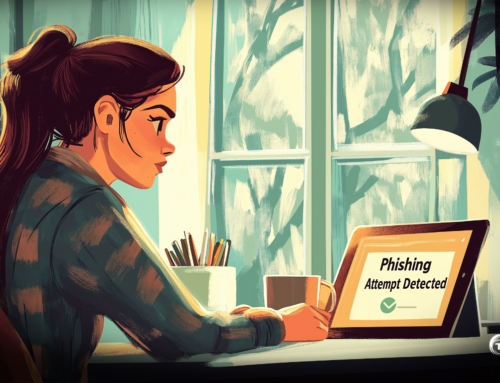
Still the Biggest Phish in the Sea
While cyber criminals continue to come up with more advanced techniques to wreak havoc on the web, in the cloud, and across networks, what is often overlooked as the simplest attack is still the most prevalent and successful: phishing.
Phishing is a socially engineered technique that often spreads through an organization via emails, text messages, or malicious links online. Often a user will get an email thinking it’s from their organization or someone trustworthy, then click on the link or provide info, exposing themselves to a malicious virus, identity theft, and other devastating consequences. Here are some past examples:
From a business perspective, this can definitely be alarming. If an employee were to click on a link or give away personal information, this could result in the access or loss of important company records, including customer information. This hurts your credibility as a company, can put you in a sticky legal situation, and cause a disruption in business activities resulting in a major financial loss.
So, how do you prevent phishing in your business?
Education
The best path is through education and awareness for yourself and your team.
Providing corporate training on how to avoid phishing scams can be the most effective way to stop them in the first place. Teach your employees what a suspicious email may look like and set up a system for reporting potentially malicious emails, text messages, links, and even phone calls. Encourage the use of low-cost or free anti-phishing toolbars that help catch phishing attempts.
After training, regularly test your employees with internally-designed phishing emails to see if folks are fooled. If some do fail the test, provide one-on-one coaching around phishing, as this can be more difficult for some to spot than others.
Two-Factor Authentication
Having multi-factor authentication is an excellent security layer to have for a variety of attacks. If someone accidentally leaked a password, the cyber criminal would still not be able to login to the account without that second layer of authentication. This gives your security team enough time to track down the phishing attempt and have the user change their password.
Strong Passwords
Encouraging and insisting users regularly change their passwords on a designated cadence can prevent phishing breaches. By keeping passwords both complex and agile through regular password changes, you don’t have to worry as much about passwords being reused on other websites and accounts.
Difficulty keeping track of all these unique passwords? Having them listed together in one online file is still better than repeating the same weak passwords, since the cyber criminal now has only one point of entry rather than potentially hundreds.
Regular Updates
As a security team, make sure your users are regularly updated to the latest versions of Windows, Mac, and any other software or systems they’re using. These updates usually have security measures and the latest patches to protect against the latest cybersecurity threats. Having a company-wide regular cadence for updating computers can make a huge difference, and in some cases having forced updates can be helpful. To learn more about the latest in streamlined cyber update testing, visit CyDeploy.com.
While phishing often gets tossed to the wayside as a simple, unsophisticated, and “old news” attack, it can still be one of the most dangerous. Keeping your employees up-to-date with their understanding and tools can be the most effective way to prevent phishing attacks. In addition, there are a variety of enterprise security techniques and strategies you can implement to prevent phishing across your business.



